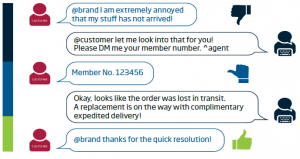
Are your salespeople prepared for the unique challenges of virtual selling?
Before this month, at least 70 percent of sales calls were virtual, according to a study from Inside Sales. With the effects of the current pandemic, that number has skyrocketed.
Great web conferencing platforms are within everyone’s reach, but don’t make the mistake of thinking that technology is all you need.
Attention and engagement are hard enough to get in a face-to-face meeting. It’s even harder over the web, when you’re a thumbnail image on a conferencing app.
With limited attention, comes less engagement. Closing complex, high-value deals require you to influence decision-making part of your buyer’s brain. Getting maximum engagement is a minimum requirement to using buyer psychology to influence big-ticket deals.
Here are three techniques, backed by science, for driving attention and engagement during virtual sales calls.
3 Research-Backed Techniques for Virtual Selling
1. Provide Value from the First Minute
It’s never been more important to start a meeting by delivering value.
If you haven’t already, ditch the “what’s keeping you up at night” questions that are sure to cause eye-rolling, or worse—app switching. Instead, lead with the unique perspective you have from dealing with dozens of companies like the one you’re speaking with. Discovery is important, but only after you’ve established value.
Start the meeting with a fresh idea or unique challenge you’ve identified though working in your prospect’s industry. Doing so will:
- Deliver value from the start so people will see the benefit of paying attention
- Frame the discussion in an area where you offer unique value
- Create a safe space for prospects to admit they have a problem
Learn more about the messaging impact of Unconsidered Needs.
2. Engage Your Audience (Even if it’s Uncomfortable)
With the short supply of attention and engagement, your sellers are fearful of doing anything that might drive away an interested buyer.
According to a survey of over 300 B2B salespeople, 42 percent of sellers try to “reduce friction” by keeping the conversation verbal only. And 46 percent of sellers add only minimal friction, asking prospects to use a web link to virtually walk through a sales deck. The problem is, by not asking your audience to do anything, you are making it easier for them to tune out.
A Corporate Visions study found that adding some friction can often lead to a more productive conversation. Asking a prospect to write down some words or draw a picture increased message effectiveness, seller credibility, and information recall. And, in a live simulation conducted in partnership with a Corporate Visions client, using interactive visuals increased sales by 24 percent month over month and year over year.
3. Lean on Visuals and Make Them Dynamic
The virtual buying experience can be highly distracting. To capture and keep people’s attention, your sales deck needs significantly more animation, movement, and slides to overcome your prospect’s “stimulation threshold.”
In fact, research from Memzy (a Corporate Visions company) shows you need roughly three times the number of slides to communicate the same amount of information in a virtual conversation.
This doesn’t mean you should include three times the information. Buyers will only remember about 10 percent of what you said 48 hours later. So, it’s more about identifying your most important “10 percent message,” and designing your sales deck so your prospects will stay engaged and remember your message when it’s time to buy.
Make Sure You’re Ready for the Virtual Selling Moment
Virtual selling is now the new norm. If your sales reps aren’t prepared with skills and techniques suited for the virtual sales environment, you risk losing the attention and engagement that’s so critical to winning complex deals.
Using the three techniques above, and the research that supports them, you can make sure your company is ready to win in the virtual selling moment.
Digital & Social Articles on Business 2 Community
(85)
Report Post







